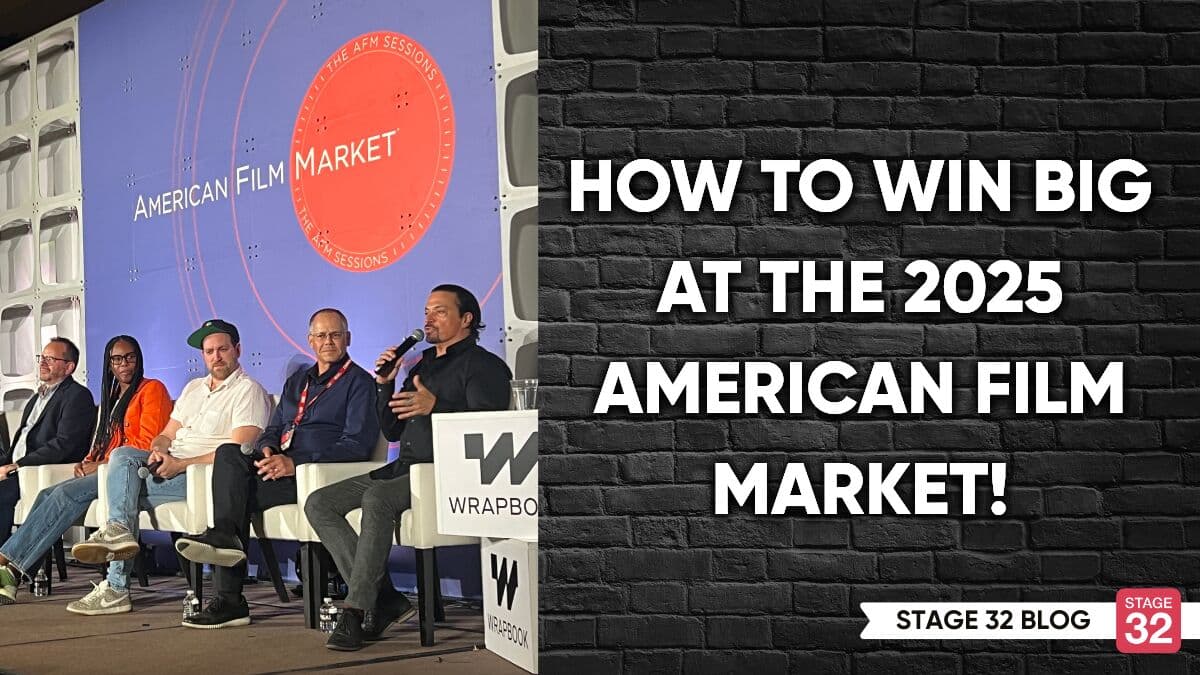The Rise & Struggle of Independent Filmmakers: Sustaining Creativity in a Studio-Dominated World

The Rise & Struggle of Independent Filmmakers: Sustaining Creativity in a Studio-Dominated World

In an industry dominated by blockbuster franchises, it’s easy to forget that nearly 94% of films are produced independently. These films bring raw creativity to the screen—unfiltered, diverse, and often deeply personal. Behind every independent film, there’s a story not just of artistic ambition but of resilience, resourcefulness, and sometimes sheer survival. This article explores why so many filmmakers choose the independent path, how they sustain themselves amidst challenges, and why big studios seldom support them.
The Creative Freedom of Independence
For many filmmakers, the decision to go independent is about more than just avoiding the bureaucracy of big studios—it’s about preserving their artistic voice. Independent filmmakers are drawn to the freedom to tell stories that might not fit neatly into commercial formulas. These stories could be deeply personal, politically charged, or simply experimental. From tender, intimate narratives to wildly unconventional storytelling methods, the indie space is where filmmakers genuinely get to explore the limits of their craft.
As filmmaker Ava DuVernay once shared, “Independent films allow you to see the world through a different lens, often one unafraid of complexity.” This freedom to take risks makes independent films such a vital part of cinema, offering viewers a fresh perspective that often feels more authentic than the polished, calculated productions of major studios.

Technological Advancements Empowering Indie Films
Gone are the days when filmmaking was an art accessible only to those with deep pockets. Technological advancements over the past two decades have leveled the playing field for independent filmmakers. Affordable digital cameras, such as the Canon EOS series, editing software like Adobe Premiere Pro, and the vast wealth of online tutorials have made high-quality production more achievable than ever.
Beyond the equipment, platforms like Kickstarter and Indiegogo have opened up new funding avenues, with Kickstarter alone having funded over 30,000 film projects as of 2023. Social media platforms are another powerful tool, enabling independent creators to build a community around their work and generate buzz without needing the massive marketing budgets that studios have at their disposal. Indie filmmaker Sarah Adina Smith shared that social media "allowed us to find our people before we even finished the script.”
Success Stories: The Rise of Alternative Distribution Channels
One of the most significant developments for independent filmmakers has been the rise of alternative distribution channels. Streaming services like Netflix, Vimeo, and YouTube have made it possible for indie films to reach audiences around the globe. For instance, the independent film Roma by Alfonso Cuarón gained worldwide attention after being released on Netflix. Film festivals, too, remain an essential platform for indie films. The story of Whiplash, which started as a short film at Sundance before becoming an Academy Award-winning feature, shows how festivals can launch careers.
Other indie films, such as The Farewell and Minari, which both succeeded on streaming platforms, illustrate that indie films can have a significant cultural impact and even compete for major awards. These platforms have not only broadened the audience but have also validated the unique and powerful storytelling found in independent cinema.
The Major Challenges Faced by Independent Filmmakers
While technology and new distribution methods have empowered independent filmmakers, the path is still fraught with challenges. One of the most significant obstacles is funding. Independent films often operate on shoestring budgets, ranging from $10,000 to $500,000, while studio films can easily exceed $100 million. Securing financing is an uphill battle. Without the backing of major studios, filmmakers must rely on grants, crowdfunding, or personal savings to get their projects off the ground.
Market competition is another major hurdle. In a landscape where blockbuster movies dominate marketing channels and screens, it’s incredibly difficult for an independent film to stand out. Even with the help of festivals or streaming platforms, getting noticed amidst the endless stream of content is a daunting task. This often means that, despite the blood, sweat, and tears poured into their projects, many indie films struggle to reach a broad audience or turn a profit.

Why Don’t Major Studios Support More Independent Filmmakers?
Major studios are in the business of profit, and their priorities lie in maximizing returns. They tend to favor projects with proven commercial viability—those with built-in audiences, bankable stars, or franchise potential. Independent films, which are often more experimental and cater to niche audiences, inherently carry more financial risk and offer lower profit margins. For studios, it’s a numbers game, and the numbers often don’t favor indie projects.
Moreover, the creative freedom that indie filmmakers seek can clash with the studio system’s demands for oversight and control. Studios prefer to have a say in every aspect of production to ensure a film's commercial success, which is something many independent filmmakers are unwilling to compromise on.
The European Perspective
While Hollywood often dominates discussions about cinema, independent filmmaking is equally, if not more, vital in Europe. Here, indie films are a form of artistic expression and a key part of cultural heritage. However, European independent filmmakers face many of the same challenges—limited funding, competition with Hollywood blockbusters, and difficulty securing distribution.
Unlike in the U.S., where independent filmmakers can sometimes rely on private investors or crowdfunding, European filmmakers often turn to government grants and cultural bodies for support. Yet, as noted by the British Film Institute (BFI), competition for grants is fierce, and the UK independent film sector faces severe economic pressures.
Indie Filmmaking Beyond the West
While this article has focused on Europe and the U.S., independent filmmaking is a global phenomenon. In countries like India, Brazil, and South Korea, indie films often provide the only platform for stories and voices that mainstream cinema overlooks. South Korea, for example, has seen a growing indie film scene, with filmmakers using limited resources to produce bold narratives that explore societal issues. India, too, has a rich history of parallel cinema, where independent filmmakers push boundaries and present social commentaries often ignored by Bollywood.

How Indie Filmmakers Sustain Themselves
Given these challenges, how do independent filmmakers manage to keep going? Many diversify their income streams, taking on freelance work such as directing commercials, teaching film classes, or working as editors. Filmmaker Ava DuVernay, for instance, sustained herself early in her career by producing commercials and music videos. Others collaborate with fellow indie creators, sharing resources and bartering skills to keep costs down.
In addition, some filmmakers look beyond film for funding. Director Taika Waititi, for example, initially gained recognition for his short films funded by art grants, paving the way for his transition into feature films.
Resources for Aspiring Filmmakers
For those inspired to take the indie route, numerous resources can help turn a passion for filmmaking into a sustainable career. Platforms like Seed&Spark offer crowdfunding specifically for filmmakers, and festivals like Slamdance provide networking opportunities tailored for emerging talent. Aspiring indie filmmakers can also look to organizations like Film Independent and the Sundance Institute, which offer grants and fellowships.
Conclusion: The Heartbeat of Cinema
The world of independent filmmaking is one of grit, creativity, and community. Against the odds, these filmmakers continue to push boundaries, telling stories that might otherwise remain untold. Their work reminds us that film is not just a commodity but an art form—a platform for voices from every corner of society. In a world increasingly dominated by sequels and franchises, independent filmmakers keep the spirit of cinema alive.
Indie filmmaking may be a struggle, but it is one that many artists willingly endure. As the independent film producer Christine Vachon says, “If you love something, you find a way to make it happen. And independent filmmakers love cinema.” For every aspiring filmmaker, this is the real message of indie film: that sometimes, the greatest success is simply bringing your vision to life.
Let's hear your thoughts in the comments below!
Got an idea for a post? Or have you collaborated with Stage 32 members to create a project? We'd love to hear about it. Email Ashley at blog@stage32.com and let's get your post published!
Please help support your fellow Stage 32ers by sharing this on social. Check out the social media buttons at the top to share on Instagram @stage32 , Twitter @stage32 , Facebook @stage32 , and LinkedIn @stage-32 .
About the Author

Vincent Weberink
Marketing Professional
Hi there! I'm Vincent Weberink, and I'm passionate about bringing people together to create amazing productions Pzaz is where Films are made, the ecosystem designed for the filmmaker entrepreneur to help you get things done. It streamlines the filmmaking process, from pre-production to post-producti...





